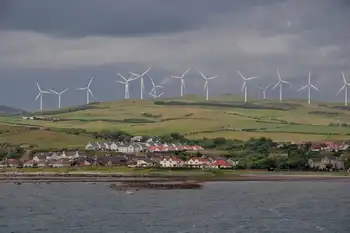Ocean Waves Can Be Effectively Harnessed Through New Wave-Pump Technology
By PR Newswire
Arc Flash Training CSA Z462 - Electrical Safety Essentials
Our customized live online or in‑person group training can be delivered to your staff at your location.

- Live Online
- 6 hours Instructor-led
- Group Training Available
The versatile SEADOG Pump system can provide abundant fresh water when combined with desalination and produce clean renewable energy when combined with a variety of turbine-driven systems.
INRI, formed in January of 2002 by CEO Mark A. Thomas, developed and acquired the SEADOG Pump technology from its inventor, Kenneth W. Welch, Jr., and co-inventors Curtis and Harold Rothi.
SEADOG captures ocean-wave energy from swells or waves to pump large volumes of seawater to shore-based storage or sea-based platform systems while consuming no fuel. February 2007 ocean trial testing off the coast of Freeport/Surfside Beach, Texas, validated the results of several years of concepts and planning, showing the company's SEADOG Pump wave-pump technology as a viable means of harvesting renewable power from ocean waves.
"As a wave energy collector, its simplicity, apparent efficiency and effectiveness is commendable and can be placed among the best available wave energy collectors to date," said Frank Warnakulasuriya, Ph.D., assistant head of the department, Marine Engineering Technology, Texas A&M University at Galveston.
The size, configuration and pumping capacity of SEADOG varies depending on the wave regime, height and frequency. During testing off of the coast of Surfside Beach/Freeport, Texas, a single SEADOG Pump has experienced modest waves from 6 inches to 8 feet and has consistently pumped a range of 2,000 to 50,000 gallons of seawater per day.
"Our initial sea trial in the Gulf of Mexico exceeded our expectations, and we're excited to partner with Texas A&M University to supervise and document SEADOG Pump performance and utilize their contribution toward final design and material specification," said Mark A. Thomas, CEO, INRI. "Going forward, we're seeking actual ocean environments where we can place a demonstration wave-farm test field involving 9 to 200 SEADOG Pump wave pumps. If the wave pump continues to perform as well as our sea trials have shown, we believe it has the potential to be a breakthrough for global energy production." Wave farms may range from 50 to 80,000 pumps and exist in sea states from 6 inches to 80 foot seas.
Most wave-energy technologies involve off-shore electrical generation requiring the transmission of power to shore-based electricity grids. These technologies involve costly, complex equipment that is sensitive to corrosive seawater and has the intermittency issues similar to wind and solar. SEADOG uses a different approach with a simple pump design with few moving parts and no electronics.
To generate electricity, the SEADOG Pump ocean-wave pump captures energy from ocean swells or waves to pump seawater to a land-based holding area, where the water can be returned to the ocean through turbines, thereby producing inexpensive, renewable electricity.
Preliminary estimates based on SEADOG sea trial results suggest that a 1-square-mile field of SEADOG Pumps could generate anywhere from 50 megawatts to more than 1,500 megawatts of electricity on average, depending on the wave regime, enough power to run 67,000 to more than 2,000,000 homes.
The device pumps water to shore-based storage or sea-based platform systems, and it can store salt water or desalinated fresh water in the form of potential energy to generate power on demand, even if the current wave regime during a particular period is too low to generate power.











